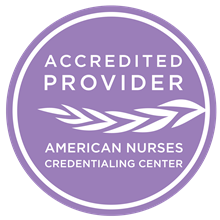My most memorable case involved a 32-year-old Caucasian male with a long history of chronic abdominal pain controlled with prn Dilaudid. He was hospitalized for additional diffuse abdominal pain and passing blood.
He was unable to work due to debilitating pain and was receiving Social Security Disability and Medicaid. During the course of hospitalization, he developed a left arm cephalic deep vein thrombosis (DVT) due to the extravasation of a variety of non-vesicant narcotic medications through an intermittent intravenous therapy (INT) catheter. Sequelae to the DVT persisted for over a year which led to his seeking resolution via a personal injury attorney.
This case is my most memorable because it not only was my first case, but it presented itself from out of left field and went exceedingly well – exactly what I needed to bolster my confidence as a new Certified Legal Nurse Consultant.
The case was in progress with a scheduled court date when unfortunately the contracted legal nurse consultant for the plaintiff attorney unexpectedly died. The attorney on the case was a family friend who had originally advised me to pursue CLNC Certification, so he thought of me immediately when he needed a fast replacement. “Find me a testifying expert,” he ordered.
To expedite this process, I obtained a copy of the medical records and within 24 hours had devoured the information and called the attorney-client to question why the hospital had not already settled out of court. When I told him that the consulting hematologist had clearly documented that the DVT was the result of INT, he anxiously responded, “Where did you see that? I want to see it.”
When the attorney received the documentation I sent, he immediately returned my call stating, “I have no idea how many people looked at this medical record, yet no one saw what you discovered. I was within an hour of writing a $2,500 check to a vascular surgeon! You’ve already earned your retainer.” The documentation that I discovered was buried at the bottom of the page of a consulting physician’s note on the electronic medical record (EMR) printout.
The printed EMR of this particular vendor can be quite confusing if it is not printed properly. This is because of the variability of page sequencing and overlap of information between the bottoms of pages to the tops of subsequent pages creating “widows and orphans” that must be pieced together. I believe this contributed to the confusion in determining what actually happened in the care of this patient and why others did not discover the pertinent information I did. Also, the medical record hinted of disparate care due to perceptions that the plaintiff was a drug-seeker which may have contributed to the main focus of documenting his pain and medications received as well as the reason the defendant was originally unwilling to settle out of court.
I developed a chronology of events by connecting the dots with information taken from various flowsheets, the medication administration record and interdisciplinary notes, all of which clearly identified areas of concern. I found no documentation of the INT ever being started, discrepancies in the INT location (right versus left arm), discrepancies regarding right versus left arm INT being used for intravenous medications and evidence of cloning of information between caregivers.
Curiously, documentation regarding the patient’s pain level and intensity and narcotics given were the only consistencies found on any of the flowsheets. No narrative entry was made by a registered nurse (RN) until 40 hours into the hospitalization at which time the RN documented that the left arm INT was infiltrated and cast blame on the patient for disconnecting his INT and getting out of bed without assistance. There was no other documentation regarding this type of behavior.
A review of the routine fall risk assessments consistently placed him on “fall precautions” due to equipment and narcotics. My first thoughts when I read the narrative note were that if he were on fall precautions prior to the INT infiltration, how was he able to carry out these behaviors, and why was a “fall risk” arm band not placed and bed alarm not set until after the incident? This single narrative entry by the RN unfortunately suggested that she was suddenly trying to cover her tracks because she had documented the status of the right INT (which did not exist) on the flowsheet at the beginning of her shift exactly as it had been documented as being in the right arm previously by another RN on the same flowsheet. Furthermore, her documentation was the first documented assessment of the INT in over 24 hours and most of the entries prior to this placed the INT in the right arm, suggesting no one ever actually looked at the INT.
After the RN discovered the infiltration, no treatment was initiated. The standard of care (SOC) for non-vesicant extravasation would have been to aspirate the site, apply cold compresses, take circumference measurements and elevate the limb for 24-48 hours. However, “secondary pain at the old INT site” was consistently documented and treated with IV morphine starting within two hours of discovery of the infiltration. Although the RN documented that she would notify the MD of the infiltration, there was no documented evidence that the MD was aware for over 24 hours and it was only then that a venous Doppler study was ordered and obtained. Although the physician promptly ordered anticoagulants for the cephalic vein thrombosis, none were actually administered until six hours later. Furthermore, upon discharge, no one determined that the patient likely could not afford the Lovenox that was ordered, so predictably four weeks later, he was readmitted to the hospital for treatment of an unresolved thrombosis.
Although infiltration of an INT is a known hazard of therapy, it was my belief that the SOC was not met as follows:
- The nursing staff failed to monitor the site at appropriate intervals to ensure timely identification of the infiltration.
- The nursing staff failed to initiate appropriate treatment after the infiltration was discovered.
- The nursing staff failed to timely notify the attending physician of the infiltration, thereby causing a delay in care.
- The nursing staff failed to promptly initiate anticoagulation therapy for over six hours after the physician’s orders were written.
- The nursing and case management staff failed to identify that the patient was at high risk of not filling his Lovenox prescription upon discharge and failed to make alternative arrangements.
Although poor documentation did not cause the injury, it cast doubt on the competence of the nursing staff and contributed to suspicions of negligence relative to the plaintiff’s drug-seeking behaviors and reliance on public assistance.
With my information in hand, my attorney-client proceeded to develop his case. I located a testifying expert (TE) via the Institute’s CLNC Directory, which was quite convenient, by the way. As a quality director at the time of the incident, I was well versed in accreditation and regulatory compliance as well as the EMR that was used in this case. Although reticent, my attorney-client insisted that I be listed as a TE because he believed my perspective would be pivotal. I went through a period of several days questioning myself whether or not the case was meritorious – after all, extravasation is a known risk to intravenous therapy and the TE and I could find no literature to support the case other than thrombosis development from peripherally inserted central venous catheters. I fretted over the fact that the patient may have been drug-seeking and I could fully appreciate the perspective of the caregivers. I used LegalNurse.com’s CLNC Mentoring to work through my concerns. The CLNC Mentors are so helpful.
I was subpoenaed for deposition by the defendant’s attorney and was scheduled as the first expert to testify. I went into the deposition thinking that I had nothing to offer to bolster the case and three hours later walked out ecstatic and practically glowing from compliments galore. The defense attorney shook my hand congratulating me on my first case stating how few people are able to and/or willing to speak to both sides of an issue during a deposition. My attorney-client was beaming as he whispered to me that the defense didn’t know what they were going to do because my testimony and findings were so thorough and compelling. Within a week, the evening before the other TE was scheduled to testify, my attorney-client called me singing my praises because the defendant settled out of court, predominantly due to my knowledge of the SOC and my ability to decipher the documentation in the EMR.
As a result of this memorable case, I learned to trust my attorney-client who had more than 40 years of experience in these types of cases. The success of this memorable case removed my self-doubt as a legal nurse consultant and helped me feel more confident when approaching new attorneys. With this winning case, I now had something to talk about. I learned to trust my own nursing knowledge and that my experience with the EMR is a skill that is tremendously valuable to current healthcare litigation. I also experienced first-hand the valuable services offered by LegalNurse.com. No doubt, this memorable first case was a resounding success.
Guest Blogger Profile
 Denise S. McDowell, RN, MSN, FAHM, FACMPE, CLNC owns McDowell Medical Legal Consulting, LLC. Her core knowledge and skills are in trauma and critical care nursing. She attained the rank of Captain, U.S. Navy Nurse Corps with over 27 years of experience across the healthcare continuum, and she enjoyed a second career as a hospital administrator. Her areas of expertise include clinical quality, quality based reimbursement, regulatory compliance and accreditation activities, case management/utilization review, infection prevention, physician practice management, population health, electronic medical records and clinical documentation improvement.
Denise S. McDowell, RN, MSN, FAHM, FACMPE, CLNC owns McDowell Medical Legal Consulting, LLC. Her core knowledge and skills are in trauma and critical care nursing. She attained the rank of Captain, U.S. Navy Nurse Corps with over 27 years of experience across the healthcare continuum, and she enjoyed a second career as a hospital administrator. Her areas of expertise include clinical quality, quality based reimbursement, regulatory compliance and accreditation activities, case management/utilization review, infection prevention, physician practice management, population health, electronic medical records and clinical documentation improvement.
P.S. Comment to congratulate Denise and to share your most memorable CLNC case.









Congratulations, Denise! I am quite confident that your work, knowledge and experience are what won the case for the plaintiff. I have similar experiences with cases. In one case, I was able to review medical records and find key points to standards of care that other consultants had missed. With my work, knowledge and experience, I developed deposition questions for the nursing staff. My attorney-client called (he is in Montana; I’m in Missouri – he contacted me through a mutual consultant on the case as he wanted assistance in understanding standards of care), to let me know that after deposing the nurse, the hospital had settled out of court for over $2M dollars! He told me that I was worth every penny he spent on me! I am a nurse and I can do anything!!
Congratulations on your achievement! On every level!!
Wonderful story, Denise! It’s amazing going from a CE to a TE and actually testifying. I was glued to your story. We learn so much from each shared story.
Congratulations on this amazing case! When we have doubts about our ability, it is very hard to overcome them. Doubting self-talk can be devastating! Once we have a win or find that one nugget that changes everything, it bolsters our confidence and then it’s like a domino effect!!! Thank you for sharing your story. It was very interesting to read and shows that as Vickie says, “We’re nurses and we can do anything!” Congratulations!!!